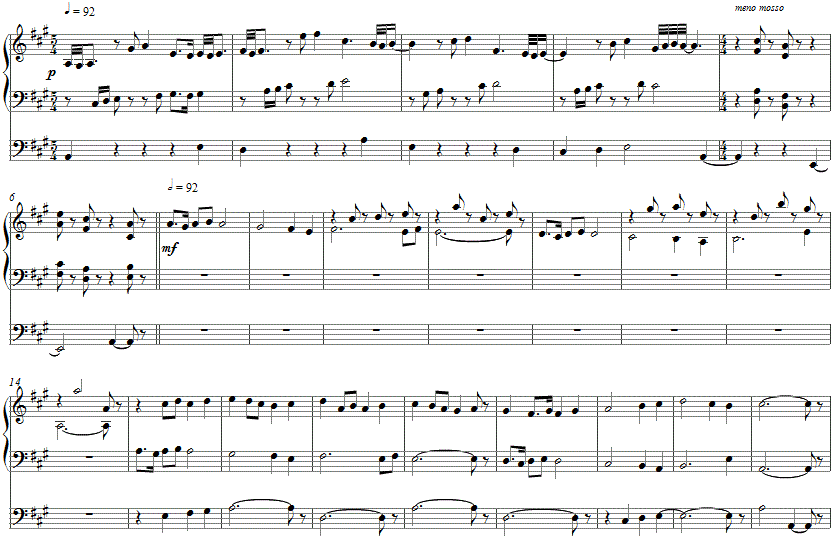Music and Texts of GARY BACHLUND
Vocal Music | Piano | Organ | Chamber Music | Orchestral | Articles and Commentary | Poems and Stories | Miscellany | FAQs
Fancy on "Adam Catched Eve" - 2011
for organ
The catch is likely from a later period than the Restoration in England as those which I have drawn in the last days from the The Catch Club or Merry Companions, for it is not included in the volumes of that publication. Some have attributed it to Joseph Baildon (1722-1774) a London composer, organist, and singer working during the life of Handel, though it may have been reworked by him. One source noted Ten catches and four glees by Baildon were published by this "lay vicar of Westminster Abbey by 1762, appointed organist of St. Luke, Old Street, and All Saints, Fulham, in London." Another family member, Thomas Baildon (d. 1760), was also was composer and singer, and associated with Westminster Abbey. Joseph Baildon received one of the first prizes given by a well-known Catch Club in 1763, and in 1766 he won another for a glee, such was the popularity in that era for catches.
The text for this round reads: "ǀǀ: Adam catched Eve by the furbelow, [ 1 ] :ǀǀ / ǀǀ: And that's the oldest catch I know. :ǀǀ ? ǀǀ: Oh ho! Did he so? Did he so? Did he so? :ǀǀ"
An introduction stating the key and tonality but oddly in 5/4 meter leads to the catch's first statement as at measure seven, partially decorated with and upper voice. Thereafter, left hand and pedal also take up the theme with short episodes of a lightly contrasting texture.
The entire work is here,
, an MP3 file [ circa 2' 30" ]
The score for Fancy on a Catch of Henry Aldrich is available as a free PDF download, though any major commercial performance or recording of the work is prohibited without prior arrangement with the composer. Click on the graphic below for this organ score.
NOTES
[ 1 ] A furbelow is properly defined as a pleated or gathered piece of material, particularly a flounce on women's clothing, being showy or superfluous. The term is attributed as from a French dialect, farbella. Of course, the text is meant to be heard as a double-entendre, while the verb "catch" also might refer to a two-part song as the word, furbelow, marks the entry of the second repetition of the round theme.
As with so many of these period catches, some of which celebrate smoking, drinking and all around carousing, one can imagine the various doctors, theologians like Aldrich to "Doctors of Musick" as were Purcell and Blow, cheered by such innuendos coupled with a lively tune. Among the earliest publications, Playford's A Musical Companion in two books, the first book containing Catches and Rounds for three voices, the second book containing Dialogues Glees, Ayres, and Songs for two, three, and four voices, were collected and published in London, in 1672-3, when Henry Purcell was perhaps thirteen years old. This was "the latest thing" in that era, a specifically English form of entertainment in a time when professional musicians were most usually in the employ of church and crown. Decades later, the form was still popular contemporary with the high Baroque, the last years of Handel's life and beyond.
